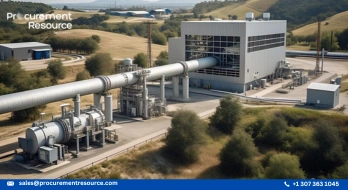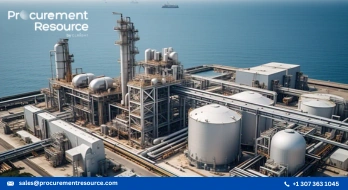CNG, PNG to Become Cheaper as Gas Price Indexed to the Monthly Average of India Crude Oil Basket
.webp)
Compressed natural gas (CNG) and piped natural gas (PNG) prices are anticipated to be10% cheaper after the Cabinet decided to connect domestic gas pricing to crude oil with a cap 24% lower than the present rate, breaking ties to gas hubs in surplus markets like the United States, Canada, and Russia.
Gas produced from ONGC and Oil India Ltd legacy fields will now be priced at 10% of the monthly average of the 'Indian Basket,' a mix of crude imported by Indian refiners, with a floor of $4 per unit (MMBtu or million metrics British thermal unit) and a ceiling of USD 6.5, compared to the current gas price of USD 8.57.
Request Access For Regular Price Update of Natural Gas
CNG and PNG are projected to be cheaper by INR 6 per unit in Delhi. CNG will cost Rs 8 per kg cheaper in Mumbai, while PNG would cost Rs 5 less per unit. Consumers in Bengaluru will also benefit by Rs 6. The benefit in different cities with a gas supply will vary due to considerations such as local fees and provider allotment of domestic gas.
Oil Minister Hardeep Singh Puri termed the move as a continuation of steps launched by Prime Minister Narendra Modi to defend consumers' interests by mitigating the impact of surging worldwide petrol prices.
The new guidelines aim to provide a stable pricing system for domestic gas users while also protecting producers from adverse market fluctuations and providing incentives for increased output.
Petrol prices will be updated monthly based on the Indian basket, rather than every six months on April 1 and October 1 of each year, based on a six-monthly rolling average of petrol prices at global hubs.
Following the Cabinet meeting, information minister Anurag Singh Thakur stated that the ceiling will be hiked by 25 cents every year for the next two years. He also stated that the decision was made to defend the interests of both consumers and producers.
The revised formula also includes a 20% premium on incremental increases in production from legacy assets given to ONGC and OIL prior to the revised Exploration Licensing Policy for auctioning acreages, which was developed in 1997-98.
The formula will not apply to auctioned fields with pricing and marketing independence, as well as geographically problematic areas with a distinct pricing regime established in 2016.
The new formula mostly follows the recommendations of a panel led by economist Kirti Parikh, who was tasked with reviewing the pricing policy for legacy fields after domestic gas prices rose from USD 1.79 per unit in October 2020 to USD 8.57 in October 2022 due to a spike in international gas rates, which drove up CNG and PNG prices. Imports supply 50% of India's petrol requirement.
The government has set a goal of increasing natural gas's proportion of the country's energy basket to 15% by 2030, up from just over 6% now.
As per Procurement Resource, compressed natural gas (CNG) and piped natural gas (PNG) will be up to 10% cheaper after the Cabinet voted to link domestic gas price to crude oil at a cap 24% lower than the current cost, cutting ties with gas hubs in surplus markets such as the United States, Canada, and Russia.
Read More About Natural Gas Production Cost Reports - REQUEST FREE SAMPLE COPY IN PDF
In comparison to the current gas price of USD 8.57, gas produced from ONGC and Oil India Ltd legacy fields will now be priced at 10% of the monthly average of the 'Indian Basket,' a mix of crude imported by Indian refiners, with a floor of USD 4 per unit (MMBtu or million metrics British thermal unit) and a ceiling of USD 6.5.
In Delhi, CNG and PNG are expected to become Rs 6 cheaper per unit. CNG will be Rs 8 cheaper per kg in Mumbai, while PNG will be Rs 5 cheaper per unit. Bengaluru residents would also profit by Rs 6. The benefit in different cities with gas supply would vary due to factors such as municipal costs and domestic gas provider allotment.

.webp)

